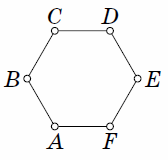Problems
There are some weighing scales without weights and 3 identical in appearance coins, one of which is fake: it is lighter than a real coin (real coins are equal in weight). How many weighings are needed to determine a counterfeit coin?
There are some incorrect weighing scales, a bag of cereal and a correct weight of 1 kg. How can you weigh on these scales 1 kg of cereals?
In a physics club, the teacher created the following experiment. He spread out 16 weights of weight 1, 2, 3, ..., 16 grams onto weighing scales, so that one of the bowls outweighed the other. Fifteen students in turn left the classroom and took with them one weight each, and after each student’s departure, the scales changed their position and outweighed the opposite bowl of the scales. What weight could remain on the scales?
A row of 4 coins lies on the table. Some of the coins are real and some of them are fake (the ones which weigh less than the real ones). It is known that any real coin lies to the left of any false coin. How can you determine whether each of the coins on the table is real or fake, by weighing once using a balance scale?
At the vertices of the hexagon \(ABCDEF\) (see Fig.) There were 6 identical balls: at \(A\) – one with mass 1 g, at \(B\) – 2 g, ..., at \(F\) – 6 g. Callum changed the places of two balls in opposite vertices. A set of weighing scales with 2 plates is available, which let you know which plate contains the balls of greater mass. How, in one weighing, can it be determined which balls were rearranged?

Seven coins are arranged in a circle. It is known that some four of them, lying in succession, are fake and that every counterfeit coin is lighter than a real one. Explain how to find two counterfeit coins from one weighing on scales without any weights. (All counterfeit coins weigh the same.)
27 coins are given, of which one is a fake, and it is known that a counterfeit coin is lighter than a real one. How can the counterfeit coin be found from 3 weighings on the scales without weights?
There are scales without weights and 3 identical in appearance coins, one of which is fake: it is lighter than the real ones (the real coins are of the same weight). How many weightings are needed to determine the counterfeit coin? Solve the same problem in the cases where there are 4 coins and 9 coins.
We have scales without weights and 3 identical in appearance coins. One of the coins is fake, and it is not known whether it is lighter or heavier than the real coins (note that all real coins are of the same weight). How many weighings are needed to determine the counterfeit coin? Solve the same problem in the cases where there are 4 coins and 9 coins.
Jack the goldminer extracted 9 kg of golden sand. Will he be able to measure 2 kg of sand in three goes with the help of scales: a) with two weights of 200 g and 50 g; b) with one weight of 200 g?